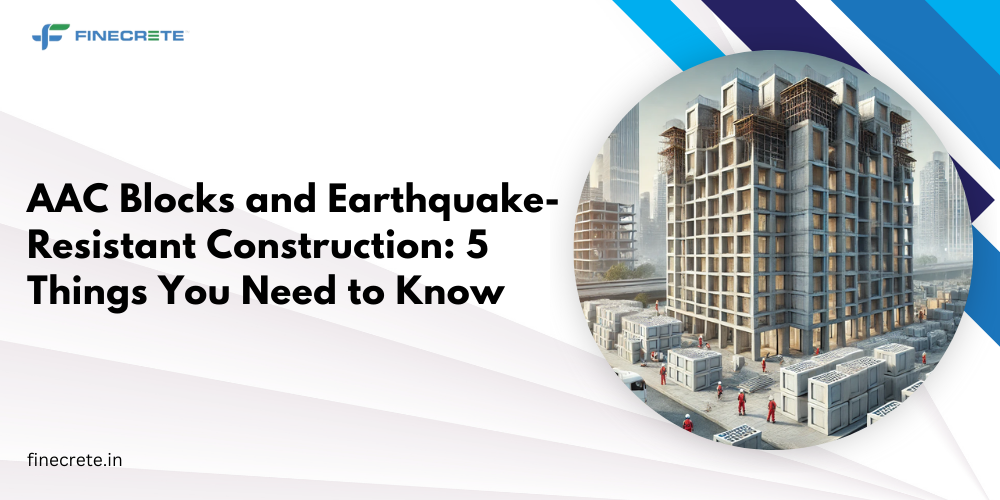Today, it has become a top priority for builders to make buildings safe against natural disasters. In the modern era of construction, despite advances, you can find that structures are threatened by one of the most unpredictable and destructive forces of nature – earthquakes. Autoclaved Aerated Concrete (AAC) blocks are a great way to combat earthquakes. Lightweight, durable, and versatile, these are being regarded as perfect for earthquake-resistant construction projects. Know 5 important things about AAC blocks and the role that they play in making buildings earthquake-resistant.
Lightweight nature reduces seismic forces
Did you know that AAC blocks are lightweight in nature? This is one of the top reasons why these are used for earthquake-resistant construction projects. Buildings add more weight due to bricks, concrete, and other traditional construction materials. These make them more susceptible to seismic forces.
AAC blocks reduce the overall dead load of the structure, as these are just one-third of the weight of conventional bricks. This directly minimizes the seismic forces acting on the building. During an earthquake, buildings made with AAC blocks are less likely to collapse.
High strength-to-weight ratio
The impressive strength-to-weight ratio of AAC blocks makes them capable of withstanding the forces generated during an earthquake. There are millions of tiny air pockets in their cellular structure. These make them light and capable of absorbing as well as dissipating energy. Thus, even under seismic stress, AAC blocks can maintain structural integrity. These have rightly become an ideal choice for earthquake-prone regions.
Improved flexibility in construction
Architects and engineers can easily create seismic force-resistant building designs with AAC blocks that can easily be cut, shaped, and assembled. These can be used to build components such as shear walls and diaphragms that are important for making buildings earthquake-resistant. AAC blocks are precise and uniform, which makes them integrate seamlessly into complex structural designs.
Longer lifespan and fire resistance
AAC blocks can resist fire for more time and slow down the spread of flames, following fire hazards that often occur after seismic events due to ruptured gas lines and electrical faults. These can last longer and also make construction structures more durable. These can resist various environmental factors such as moisture, mold, and pests.
Eco-friendly and sustainable construction
AAC blocks are also sustainable. These are made of non-toxic materials such as ash, lime, cement, and aluminum powder. The environmental impact of these construction materials is lower than that of traditional bricks.
These generate minimal waste and consume less energy, which makes them an eco-friendly choice. AAC blocks have excellent thermal insulation properties and help builders to promote green construction practices. These are effective in many ways.
It can safely be said that AAC blocks can be extremely useful for earthquake-resistant construction, standing out due to their unique properties and numerous advantages. These have become a preferred choice for builders and architects worldwide. If you wish to plan a construction project in a seismic zone, you can make your building safer with these materials. Go for them!
For high-quality materials, consider AAC block manufacturers in Delhi to ensure durability and efficiency in your construction projects.






